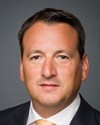Exactly.
Evidence of meeting #5 for Indigenous and Northern Affairs in the 40th Parliament, 2nd session. (The original version is on Parliament’s site, as are the minutes.) The winning word was information.
A recording is available from Parliament.
Evidence of meeting #5 for Indigenous and Northern Affairs in the 40th Parliament, 2nd session. (The original version is on Parliament’s site, as are the minutes.) The winning word was information.
A recording is available from Parliament.
Assistant Director, Social and Aboriginal Statistics Division, Statistics Canada
Exactly.
Conservative

Greg Rickford Conservative Kenora, ON
I knew health would just take over and I wouldn't get a chance. I apologize.
Conservative

The Chair Conservative Bruce Stanton
Thank you very much.
Let us start the second round with Mr. Bélanger. You have five minutes.
February 24th, 2009 / 9:50 a.m.
Liberal

Mauril Bélanger Liberal Ottawa—Vanier, ON
Thank you, Mr. Chair.
Thank you for being here, first of all. I'll go straight to questions to help me understand. On slide 14, what's the difference between good and fair?
Assistant Director, Social and Aboriginal Statistics Division, Statistics Canada
Really, what we did was we gave the respondents a five-point scale and we asked them whether it was excellent, very good, good, fair, or poor. So when we analyzed the data we grouped some of them together. We grouped excellent or very good as one, good, and then fair or poor as one.
Liberal

Mauril Bélanger Liberal Ottawa—Vanier, ON
I still fail to understand. It's a matter of nuances, but it's when you group fair and poor together that I have a problem, because they're fairly contradictory concepts, and no pun intended here, but you've put them together.
To me, for something that is poor, I would think for most people it's fairly clear that we're not happy, we're not satisfied and so forth. If it's fair, you can be okay with it. But to lump them together doesn't provide me at least with a fair assessment of what they may be thinking. That's just for future use perhaps.
Assistant Director, Social and Aboriginal Statistics Division, Statistics Canada
And it is possible to look at them separately as well.
Liberal

Mauril Bélanger Liberal Ottawa—Vanier, ON
Thank you.
On slide 15 you have an appreciation of within the community and outside the community. Correct? What is “outside” the community?
Assistant Director, Social and Aboriginal Statistics Division, Statistics Canada
Basically when we're looking at Inuit Nunaat, we're looking at the Inuit land claim regions.
Liberal

Mauril Bélanger Liberal Ottawa—Vanier, ON
I understand that. That's not my question. What's outside? The rest?
Assistant Director, Social and Aboriginal Statistics Division, Statistics Canada
Outside are all of the other Inuit living in Canada outside of the Inuit land claim region.
Liberal

Mauril Bélanger Liberal Ottawa—Vanier, ON
Do you have that a little more defined? That's a pretty vast territory.
For instance, I happen to represent the riding that I believe has the largest concentration of Inuit people outside Nunavut. Is that so? Could you isolate this a little more so that I could get some statistics on how the Inuit population in, say, large urban centres feels?
Assistant Director, Social and Aboriginal Statistics Division, Statistics Canada
Likely not, because of population sizes and the fact that this was a sample survey. We likely don't have sufficient numbers to be able to produce anything smaller.
Liberal
Assistant Director, Social and Aboriginal Statistics Division, Statistics Canada
I don't think we can do that. We'd have to look at it.
Assistant Director, Social and Aboriginal Statistics Division, Statistics Canada
Yes.
Liberal

Mauril Bélanger Liberal Ottawa—Vanier, ON
Thank you.
Mr. Dockstator, the estimates for 2007 and 2008, if my information is correct--and I'm going to ask you if it is correct--would have attributed respectively $4.8 million and $4.3 million to your organization. Is that information accurate?
Chairman, First Nations Statistical Institute
In order to access our budget, which is already allocated, as an organization we had to go through a number of steps. The first step was to get a full board constituted and to pass our bylaw so that we became a legal entity. Then we developed our corporate plan and Treasury Board submission and went in front of Treasury Board.
As I said, last year at this time we didn't have a board, so those estimates were correct, but we weren't able to access it until this year. Even then, it was just for some interim funding to get us up and operating as an organization.
Chairman, First Nations Statistical Institute
It's a part-time position, a Governor in Council appointment.